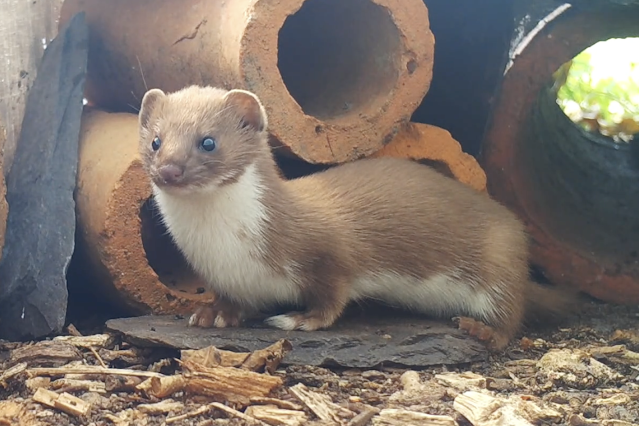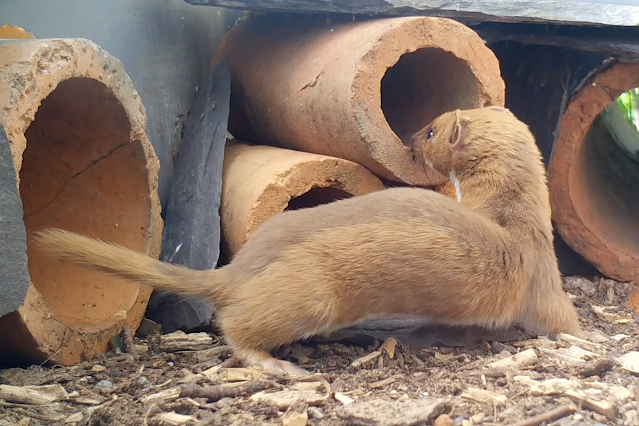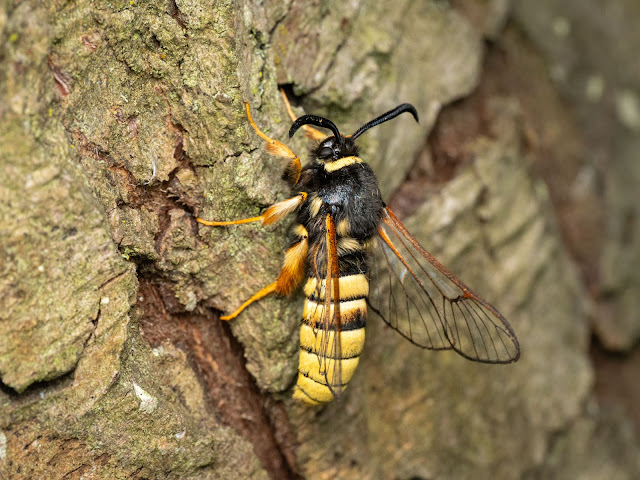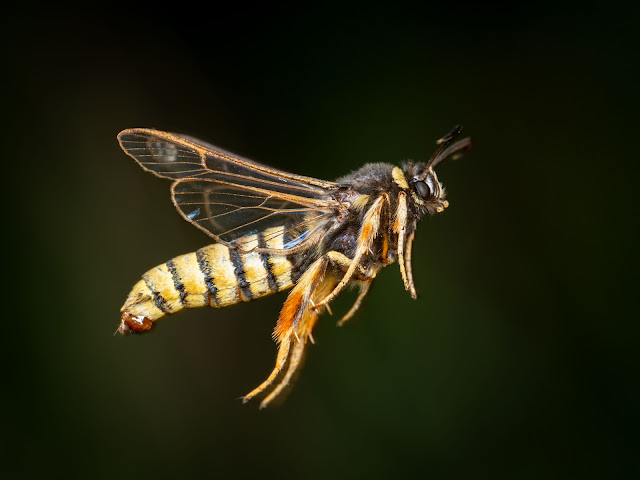OtterCam is in a quiet phase after a very exciting winter and spring. The previous cubs were last seen on 02 May and their mother was seriously courting the dog otter on 04 May. Courtship is said to last three or four days and an otter pregnancy lasts 63 days so if all went according to plan it could be that new cubs were born about two weeks ago. Even so, we won't expect to see them on camera until some time in October.
The cameras have been keeping an eye on things and recorded this video of the female at the end of June, possibly ten days before cubs were due. Otters have two or three cubs which are born at about 13cm in length weighing a bit over 100g (3½oz). So, given a female otter's size (6000g) and body shape, I don't know whether we would be able to tell if this one was pregnant.
The next video was recorded 20 days later, so possibly 10 days or so after giving birth. Again it is very difficult to tell from the video but I just wonder if there is evidence she might be feeding cubs.
In the following week the female turned up four times at this camera point to leave a scent mark. In the same time the dog otter went past just once so I expect he is elsewhere much of the time.


































